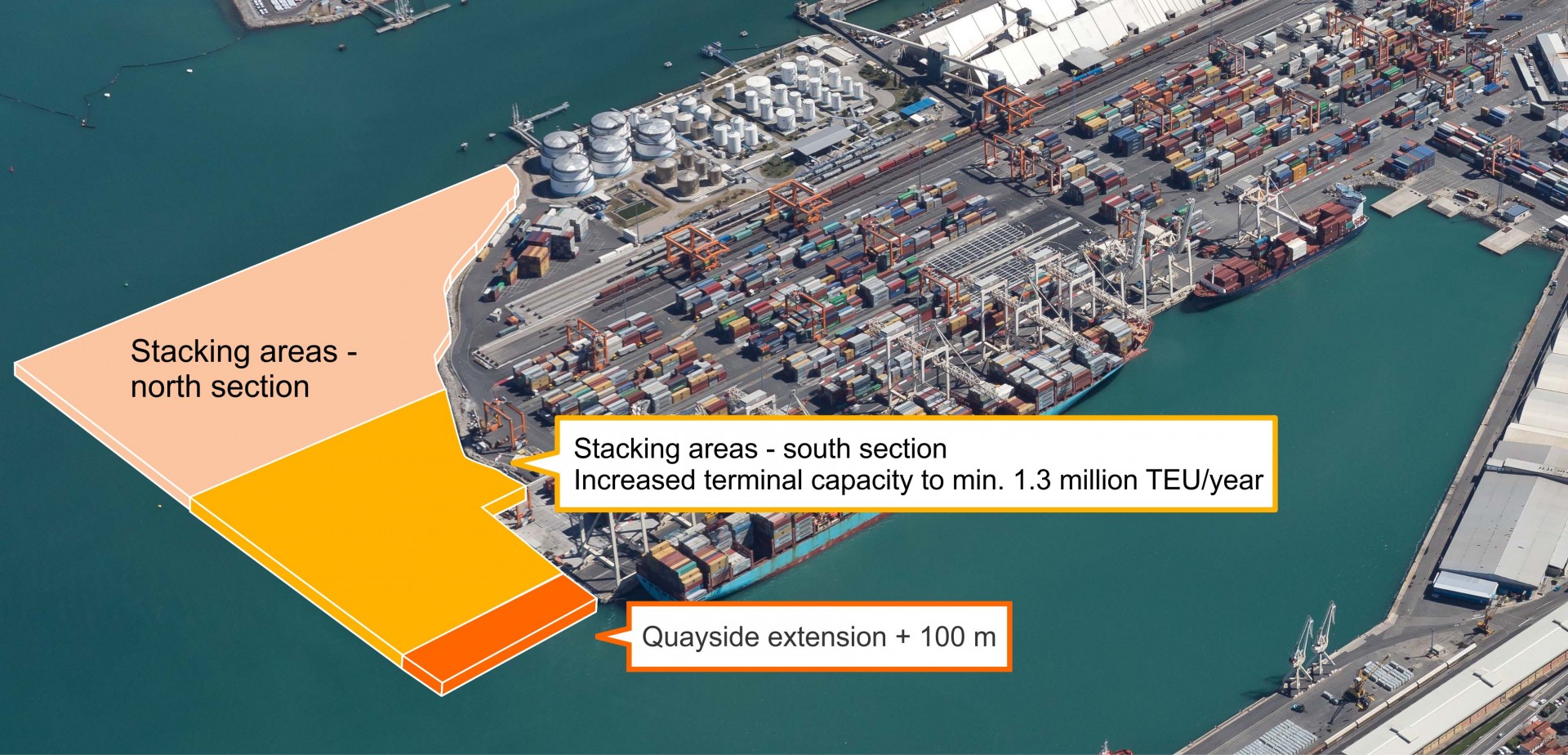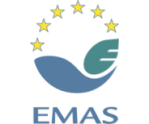Today, on 9th November 2018, Luka Koper received from the Slovenian Ministry of the environment the official notice that the building permit for the extension of the container terminal quayside is finally legally valid. The building permit was issued for the construction of the quayside 98.5 meters long and 34.4 meters wide and for the construction of a hinterland area (total size 24.830 m2). The total length of the container terminal quayside shall be then 695 meters.
By the time the building permit has become valid, we already published the public procurement for the selection of the contractor who will install test drilling pilots, which will carry the upper structure of the quayside. Afterwards, a period of monitoring will follow and actual construction works are expected to start in May 2019.
The whole investment is expected to be completed in the beginning of 2021. In accordance with the business strategy the terminal will be at that time able to handle at least 1.3 million TEUs annually. With the ongoing optimization of operational and infrastructure processes this number can be increased to 1.5 million TEU/year.
The extension of Pier I is a key project for Luka Koper, which includes also the acquisition of new port equipment, such as STS cranes, transtainers and other handling vehicles. The total value of the investment is 235 million Euros, part of this amount was already spent for past projects, such as dredging, rail tracks construction and cranes.
Luka Koper has also succeeded to acquire 6 million Euros of European funds through the NAPA4CORE project (CEF program), which include also the mentioned Pier I extension. 3.2 million Euros were already drawn and another 2.8 millions were granted within the extended deadline until 2020.
Simplifying the access to the port
From 22 October 2018 an automatic scanning of the driver’s access pass on entering the port was introduced for all transport operators who hold the annual access permits and who already adopted the prepaid entrance toll payment system. By doing so, we are simplifying the access to the port to all truck drivers who no longer need to stop at the Truck Terminal and, at the same time, we contribute to improve the traffic flow on the roads inside the port.
New vehicle booking system and additional entrance to the port
The project’s next level will be the introduction of a vehicle booking system based on which the transport operators will pre-announce the arrivals of the trucks. The testing phase will begin already this year whereas the new system will be launched in March 2019, when the opening of an additional entrance to the port – the new Sermin trucks entrance – will be arranged.
The main advantage of the new system will be that the access permit (pass) which allows the truck drivers to access the port, will simultaneously also carry the information when and at what location will the cargo be ready for un/loading. The advantage will especially be perceived after the opening of the new Sermin trucks entrance that truckers will access directly from the motorway. In this manner, the transport time will be reduced, and the truckers will be able to plan their arrival to the port more easily.
Simultaneously, the new approach will contribute to relieve the existing Truck Terminal on the outskirts of Koper as well as to relieve the traffic on all major arteries to the city and within the port. Out of more than 800 trucks that on average enter the Port of Koper every day, approximately 40% will be diverted by us to the Sermin trucks entrance. Basically, we will divert to the Sermin entrance almost all truckers headed to Pier II where the dry bulk cargo, liquid cargo, general cargo and large storage areas for vehicles are located. As a matter of fact, the truck transport has been on the rise in recent years. Only this year a 10% increase was registered compared to the same period last year.
Car terminal
Recently we also obtained the building permit for the construction of additional rail tracks in Basin III hinterland that will satisfy the increasing requirements of the Car Terminal and we were granted the building permit for the construction of a new RO-RO berth in Basin III.
In the meantime, we launched the tender process for the selection of a contractor in charge of constructing the new garage for 6,000 cars and we successfully implemented a new IT system, ACAR, at the Car Terminal. In agreement with the State, we are striving to obtain as soon as possible new plots of land for cars storing, namely 100,000 m2 of land extending along the port’s fence that according to the national spatial plan are designated for the port activity.




